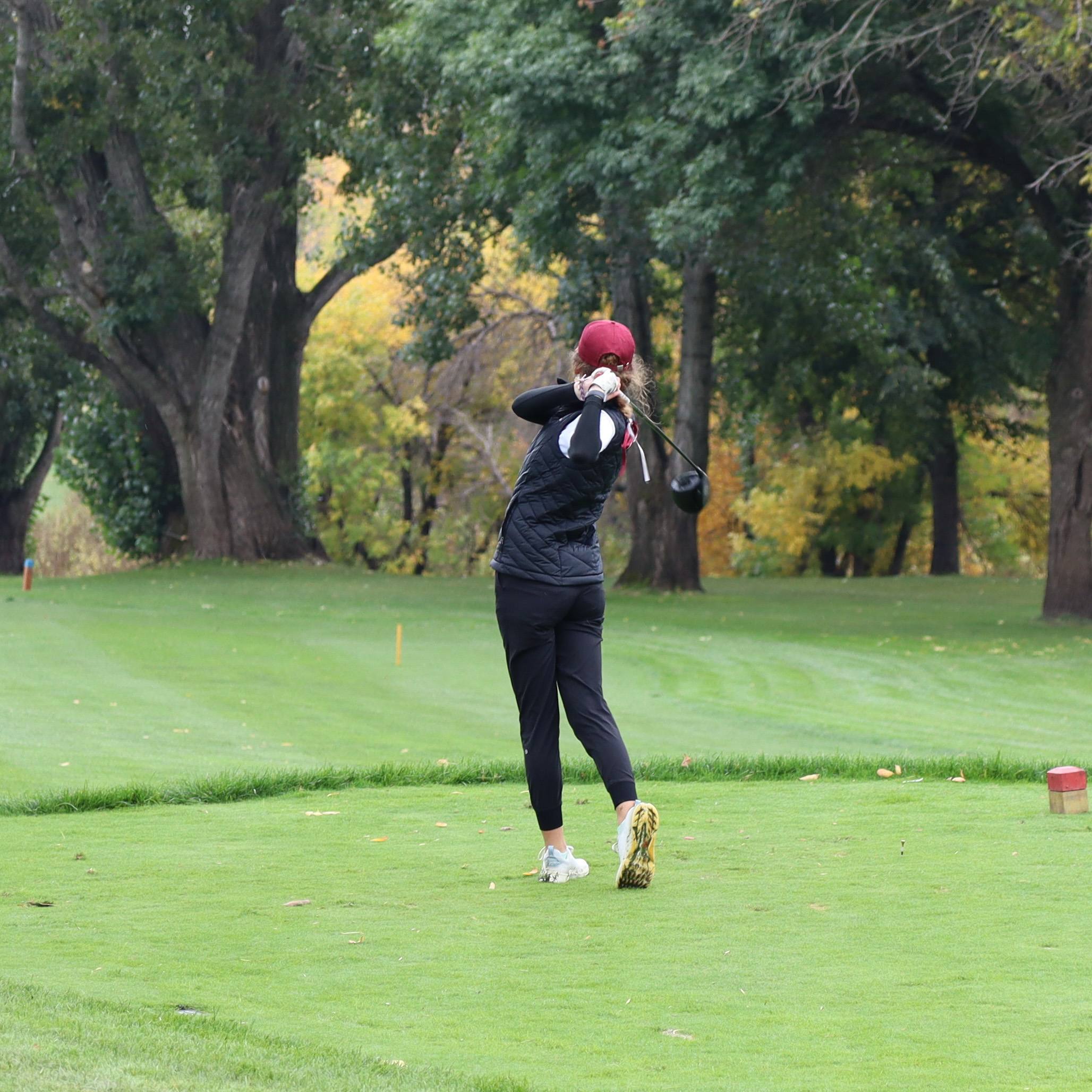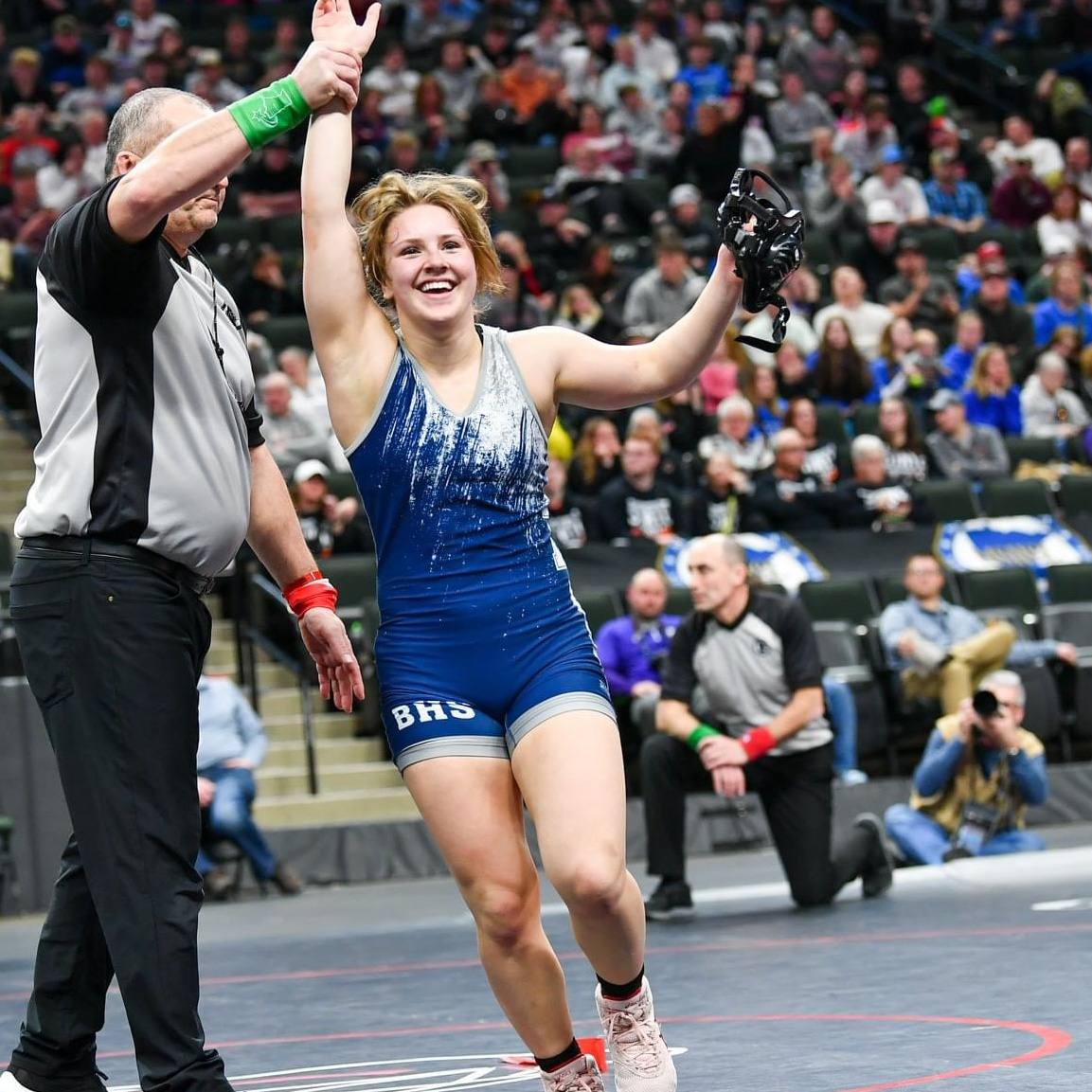
As an active teenager, Mason Orth struggled with the back brace she had to wear to correct her scoliosis. And she was hesitant to move forward with the other treatment option presented to her, spinal fusion. But a consult at Mayo Clinic revealed another option — one that has yielded dramatic results.
To 17-year-old Mason Orth, movement and flexibility are everything. She's an accomplished high school cheerleader and has enjoyed participating in a baton-twirling troupe.
Not long ago, however, it was unclear if Mason would be able to continue her involvement in those kinds of activities that required her to bend and twist. That's because Mason was diagnosed with scoliosis, a sideways curvature of the spine. The condition was causing her pain, and the back brace she wore to correct it was cumbersome and undermined her self-esteem. But the other standard treatment option for scoliosis, spinal fusion, would make it almost impossible for her to maintain her flexibility.
In search of other options, Mason and her mother, Stephanie, went to Mayo Clinic. There, orthopedic surgeon Todd Milbrandt, M.D., provided an attractive alternative — a procedure called anterior vertebral body tethering that could correct the scoliosis while preserving Mason's flexibility and ease of movement. The surgery was being offered for adolescent scoliosis patients as part of a clinical trial at Mayo Clinic's Rochester campus.
"These kids go back to everything, including sports, in just three months, and they don't wear a brace," Dr. Milbrandt says. "This attracts patients who want more flexibility than a spinal fusion will allow."
It was exactly the solution Mason needed.
Crumbling confidence
Mason learned she had scoliosis when she was 9. A condition seven times more common in girls than boys, many cases of scoliosis are mild and don't require treatment. But by the time she was 13, Mason's condition had worsened to the point where she had a 40-degree curvature of the spine. At that point, a doctor in Omaha, Nebraska, not far from where she lives, recommended Mason wear a back brace to treat the condition. But the brace was uncomfortable, and it made her shoulders uneven.
"I wasn't confident in myself, and the brace made it worse. It hurt my sides and was very painful," Mason says. "It made my right shoulder pop up 2 inches higher than my left shoulder. I hated it."
In addition to the physical discomfort, Mason was getting teased at school, which was hard on her emotionally. At that point, Mason and her mom decided that she would only wear the brace at night.
"My last three vertebrae are the only part of my spine that's not fused, so I can't do a backbend. I didn't want that for Mason, who's so physically active."
Stephanie Orth
For Stephanie, her daughter's experience brought back unpleasant memories of her own treatment for scoliosis when she was a teenager. "After I had back fusion surgery, I had to wear a full-body cast for nine months," Stephanie says. "My last three vertebrae are the only part of my spine that's not fused, so I can't do a backbend. I didn't want that for Mason, who's so physically active."
Despite her scoliosis, Mason was physically able to do the jumps and other gymnastic movements that cheerleading involves. But she complained of pressure in her lower back and had to manage the pain with medication. She knew she needed to do something, but feared what spinal fusion would mean for her. According to Dr. Milbrandt, her concern was well-founded.
"While spinal fusion surgery takes a crooked spine and makes it permanently straight by fusing the vertebrae together, the downside is that you lose movement, which is so important for Mason who needs to bend and twist," he says.
Innovative approach
During a consultation at Mayo Clinic in October 2016, Dr. Milbrandt told Mason and Stephanie about anterior vertebral body tethering, or VBT.
"We're one of a few centers around the country that offer it," Dr. Milbrandt says. "Using cameras inside the chest, we insert screws into the vertebrae affected by scoliosis. Then we attach a flexible tether to each of the screws and pull it to create asymmetrical pressure on those vertebrae. This leads to a gradual curve correction while the patient grows."
Candidates for this procedure are adolescents who have spinal curvature of more than 40 degrees and still have growth remaining. Mason fit the bill.
"In teens who have a curve the size of Mason's, the curvature will increase by 1 or 2 degrees each year," Dr. Milbrandt says. "People with big curves into adulthood have increased pain and difficulty with arthritis in the spine."

Mason and Stephanie both were pleased by what Dr. Milbrandt told them. "He drew diagrams that helped to walk me through the surgery, and made me feel reassured," Mason says. "He was very patient and very nice."
"By undergoing the VBT procedure, Mason would be able to bend and twist and do all the things I'm unable to do," Stephanie adds.
In addition to the way it would limit her mobility, there also had been concern about the long-term effects spinal fusion could have on Mason. "Over time, fusion creates one big, unmovable segment over several moving segments of the spine, which may lead to increased wear on the remaining nonfused sections," Dr. Milbrandt says.
That drawback isn't associated with vertebral body tethering. So not only would it allow Mason to meet the physical demands of cheerleading, it also would help protect the joints in her back.
Unlimited potential
Mason had the surgery on Jan. 17, 2017. Joining Dr. Milbrandt in performing the procedure was orthopedic surgeon A. Noelle Larson, M.D., and general surgeon Dean Potter Jr., M.D.
Afterward, Mason's mom noticed a difference in her daughter's back right away. "She was in the ICU for the standard 24 hours, and Dr. Milbrandt and the nurses had her sit up a few hours after surgery," Stephanie says."That's when I noticed her back was aligned and straight, and her shoulders were level. It was amazing."
"I'm more confident, and my surgery played a major role in that."
Mason Orth
Mason was able to leave the hospital after four days — a much shorter stay than if she'd had fusion surgery. She is one of about 40 patients at Mayo Clinic who've undergone the procedure so far. "I loved the people at Mayo. It's my favorite hospital," she says. "The nurses were amazing, and any doctors that came in to visit were wonderful."
Not long after she recovered, Mason looked in the mirror and was thrilled with what she saw. "I wasn't diagonal anymore. My shoulders were level, and my body looked how it was supposed to look. And that made me happy," she says. "I'm more confident, and my surgery played a major role in that."
That's just what Stephanie had hoped for. "I've been limited in the things I can do with my kids, due to my fusion surgery. As a parent, you always want your kids to have better things than you," she says. "We are just so thankful we got to meet Dr. Milbrandt. He changed Mason's life for the better."
Note: More information is available online about the vertebral body tethering clinical trial. If you have questions about this clinical trial, you can email the Mayo Clinic team at scoliosis@mayo.edu.
HELPFUL LINKS
- Learn more about scoliosis care at Mayo Clinic.
- Check out the Department of Orthopedic Surgery.
- Connect with others talking about spine health on Mayo Clinic Connect.
- Explore Mayo Clinic.
- Request an appointment.
Related Articles







